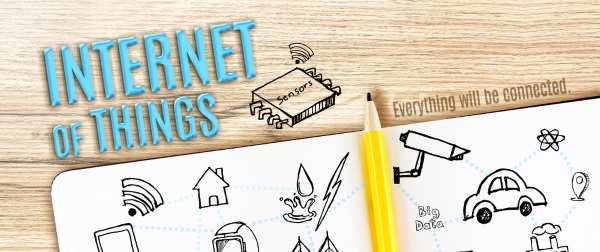Search posts by keywords:
Filter posts by author:
Related Reports
Related NEAT Reports
Other blog posts
posted on Apr 03, 2018 by Dominique Raviart

There is an abundance of IoT platforms on the market. Many technology firms (e.g. IBM Software, AWS, PTC/Thingworx, Microsoft), major manufacturing firms (GE, Siemens, ABB, Bosch, Schneider Electric) and some large IT services vendors (e.g. Accenture, TCS, and Atos via Worldline) have invested in their own IoT platform products.
History is repeating itself, as the build or buy question becomes a key strategic decision at each new application cycle: we have seen this in the past with the ERP wave, and with CRM. However, not every situation is completely similar. The difference lies in the plethora of IoT platforms: up to 300 of them are available, in various forms, from solutions to fully-packaged COTS, vertically-specialized to horizontal, with small ISVs competing with the Amazons and Microsofts of this world. And already, Microsoft is gaining mind and market share with its Azure IoT Suite.
What are the strategies that clients and IT services vendors should be adopting? Should organizations buy the IoT platforms of the largest tech vendors, or adopt the more verticalized products of start-ups? And what about IT service vendors – should they maintain and accelerate their investment or turn to a SAP partner-like model, where they bring add-on functionality to the core products?
There is no definitive answer to these important questions, but here is our thinking.
Client organizations: no easy choice
From our discussions with clients, the current appetite is primarily for buying IoT platforms that are relevant to their specific needs. But some organizations have delayed (or ignored) the IT considerations. They are happy to procure IoT COTS from niche ISVs: their need for a relevant use case and fast implementation prevails.
We do not think this attitude will last. When they enter the large deployment phase and become more familiar with license, deployment and maintenance costs, many organizations will change their mindsets: the selection of ISVs that are likely to continue investing in their IoT platform products over the coming years will be as important as selecting platforms with the best functional and technical features. This inflexion point is getting closer. Our discussions with clients show that, for many, activity has moved from workshops and PoCs and they are approaching implementation phases.
Large organizations have several options: develop their own IoT platforms, based on open source software and customize from scratch; turn to the largest ISVs and customize their IoT platform products; or use small ISVs whose platform more closely matches their specific needs. Another alternative is to partner with an IT services provider and share the costs of a joint solution, with the vendor having the rights to resell the solution to other clients.
None of these approaches is without its cost implications; e.g. developing your own IoT platform inevitably means budgets for enhancements and maintenance. This approach is probably fine for the very largest manufacturers with big IoT budgets; however, for most firms, this approach is too costly. Of course, the current transition of software products towards APIs makes it somewhat easier to adopt new micro-services. But even with micro-services, organizations still need to maintain and enhance the IoT platform.
If selecting the IoT platform of a specialized ISV, one pragmatic approach is to negotiate access to the source code. This could address one potential problem (the ISV facing financial difficulties) but again means future enhancement and maintenance costs.
So, how about adopting the IoT platform of a large technology vendor with the hope that the platform will become more comprehensive and more verticalized over time? The cost impact in this approach is that clients can pay twice: the license or subscription cost plus custom development costs, with the related enhancements and maintenance. This approach works if the ISV has a product roadmap that eventually replaces functionality or technical characteristics initially developed by the client.
At this point, none of the alternatives is completely satisfactory.
IT services vendors: adopt the SAP-like add-on model in the long-term
IT services vendors that have developed their own IoT platforms are competing with technology vendors and manufacturing firms that have access to a level of funding they cannot match. IT services vendors need to make a structural decision in their IoT product activities: either structure their IoT platforms into separately-operating software companies, or gradually move to a SAP partner-like model, where they partner with tech vendors through templates, point technical solutions, or add-on code.
This approach is more sensible. There is no point in competing with Microsoft or AWS. Also, partnering forces IT services vendors to invest in what differentiates their offerings rather than spreading thin their IoT R&D budgets. More importantly, this SAP partner-like approach is also solving the pain points of clients that are willing to adopt the non-verticalized IoT platform products of the large technology vendors. We think this approach is the future. However, it will take time before IT services vendors adopt this approach, and create relevant products.
Clients: be ready to migrate!
In the short-term, selecting the right IoT platform is not an easy solution. Organizations will need to show flexibility in their IoT programs, and be willing to migrate IoT platforms over time. This is hardly new in the IT industry: we had this phenomenon two decades ago, when organizations rushed into buying the CRM applications of Siebel, rationalize later to SAP and Oracle (after it bought Siebel), and are now migrating to cloud-based platforms.

Apr 19, 2018, by Satish Chaudhari